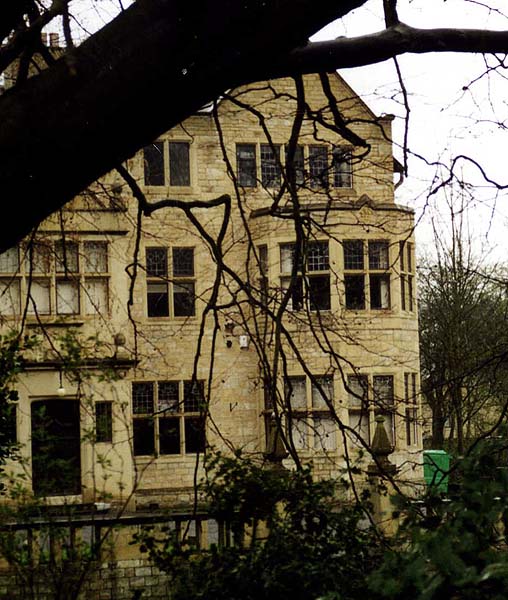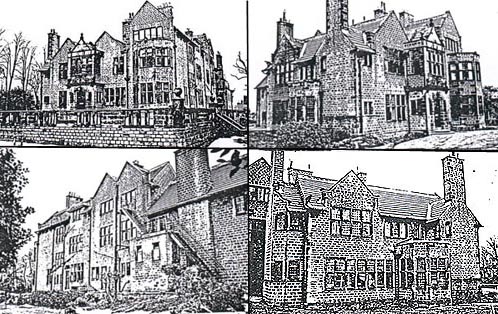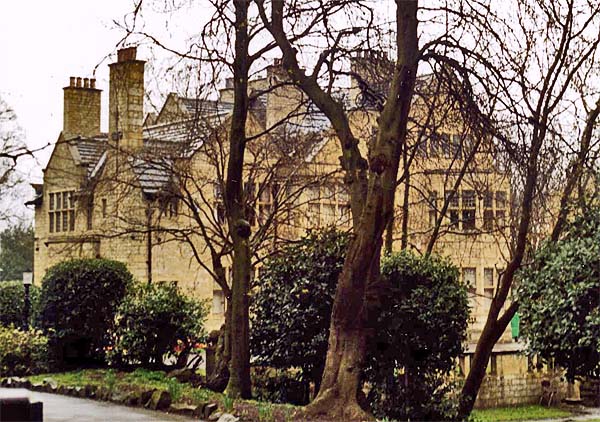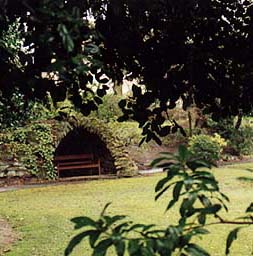 In 1895 Edgar Wood was busy building the semi-detached combinations of Redcroft and Fencegate in Middleton. Redcroft was to be his own house. He was also building numbers 2 and 4 Schwabe Street, in Middleton. At the same time across the Pennines he was building Briarcourt, in Lindley, Huddersfield, and altering the East Street Methodist Church in the same community. Briarcourt (opposite) was
his first commission in the Huddersfield area. This
large Victorian house was built for his brother-in-law
Herbert Higginson Sykes. It is located on an open site
with a slight fall to the east and skirted by Occupation
Road to the south. The house is just a short walk from
the Lindley Clock, which was commisioned by James Nield
Sykes and built 7 years after Briarcourt.  Exterior  John Archer describes the design of Briarcourt as, "typical of a detached, double-fronted Victorian house". The building's character, says Archer, "indicates Edgar Wood's early favour for the Jacobean manner and the vernacular revival which was fashionable at the time." In constructing the house Wood made use of traditional local materials. The house is built of roughly coursed rubble stone walls with courses diminishing to the eaves. It has a stone slate roof with courses diminishing to the ridge, and within stone mullions he set lead light windows. Although Wood based the design of Briarcourt on that of traditional West Riding Halls, Briarcourt has a much loftier appearance. Archer ascribes this to the fact that Victorian tastes called for rooms with high ceilings. During 1904 the house was extended by a local architect and not by Wood as one may have expected. This presumably occurred because the extension was too small to be a worthwhile project for him or that he was too busy with his experimental work using reinforced concrete.
 Briarcourt
Front Garden - 2001
|